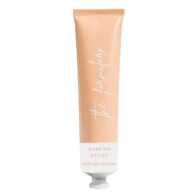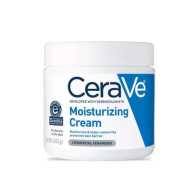
Celimax Dual Barrier Wearable Cream is a product with 39 ingredients. Contains: Vitamins - Panthenol; Ceramides - Phytosphingosine; Antioxidant - Olea Europaea (Olive) Oil, Oleic Acid, Tocopherol;
Organic score: 26% natural, 51% chemical. Vegan - No; Cruelty free - No; Reef safe - Yes;
Positive effects
Concerns
INCI - Full Breakdown
Water is a great solvent. It’s neutral and doesn’t provide any strong positive or negative effects. It just helps components to mix better and to transport active components.

Glycerin is one of the most outstanding and helpful skincare components. It's used in many skincare products because it works and provides notable results. It's one of the best moisturizers. Molecules of Glycerin can absorb water and deliver it into deep layers of the skin making it hydrated.
Caprylic/Capric Triglyceride is an emollient that also hydrates the skin without leaving a fatty film. When applied, the component feels smooth and light. In haircare products, it’s also used for hydrating purposes. It makes hair silky, lowers tangling, and makes hair smooth.
It’s safe for most people, except for people with allergic reactions to coconut or palm oil because these oils are usually used for producing the component.

Butylene Glycol is a very popular synthetic alcohol. It helps the product to absorb deeper and faster. It is also a solvent for other ingredients. As for the skin benefits, it helps to attract water and helps to make the skin softer.
Propanediol is a good solvent, emollient and humectant. It helps to moisturize the skin and prevent moisture loss. In haircare products, it conditions hair and improves absorption of the product.

Stearic Acid doesn’t belong to aggressive acids. It’s a fatty acid that can be found in Shea Butter, Cocoa Butter, and many natural butters and oils. The component is mostly used for formulation purposes. It makes the product spread and feel better. It’s one of the most important fatty acids in our skin cells.
Cetearyl Alcohol is used mostly for formulation purposes. It’s a very good emulsifier and emulsion stabilizer. It helps the ingredients mix better and it makes the product spread on your skin evenly. It also makes the product thicker. It doesn’t belong to harmful alcohols and it will not dry your skin.

1,2-Hexanediol can do a lot of good things for the formulation of the product. It’s an emollient, preservative, and humectant. It keeps skin hydrated and soft. It’s a good component for dry and dehydrated skin.
Functions
Reviews
The product doesn't have reviews. Be the first to share your experience.












